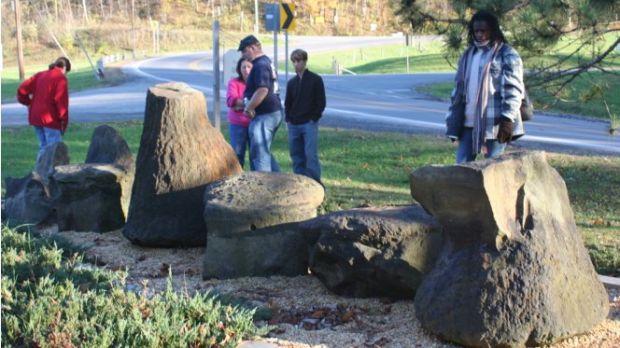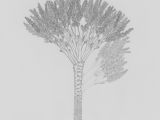When did the trademark of Robin Hood appear?
And how did the first woods look like?
Scientists have now found complete fossils of the world's oldest forest, during the Devonian era, 385 million years ago.
But this forest may have looked like young palm trees as it was made of slender trees about three stories tall and with a top made of branches lacking leaves that resembled bottlebrushes.
Two newfound fossils have delivered unprecedented clues about how the first forests looked like. "What it looks like is a palm tree, or perhaps a tree fern," said the study's lead author, paleobotanist William Stein at Binghamton University in New York. "It's a kind of morphology that's instantly recognizable among some modern groups [of trees]. The bottlebrush-like branches likely used photosynthesis and produced spores," Stein said.
The fossils discovered in New York State are similar to 385-million-year-old fossilized stumps found one hundred years ago in the nearby town of Gilboa. But till this discovery, scientists could only guess how Eospermatopteris looked like. "What we found in the last couple of years was evidence of what the top of these things looked like. They indicate the fossil trees belong to a previously known plant group called cladoxylopsids," Stein said.
"Scientists suspected the fernlike cladoxylopsids were large, but experts never had more than the branches to work with. What we got here is like a double whammy. On the one hand, we know Eospermatopteris is these great stumps. On the other hand we have real evidence for how big the cladoxylopsids actually were."
"The new fossils are surprising because they indicate Earth's first trees evolved without the aid of leaves and horizontal branches. It was probably so advantageous to be bigger than the others that they achieved [height] even if they didn't have the proper organs," said co-author Brigitte Meyer-Berthaud, a paleobotanist with the National Center for Scientific Research in Montpellier, France.
She discovered in 1999 another species, Archaeopteris, described as the world's most ancient tree.
Archaeopteris, dated 385-359 million years ago, presented horizontal branches, leaves and a vast root system, considered to be crucial traits to grow in a treelike stature.
Cladoxylopsids, including Eospermatopteris, were spread worldwide 400 to 385 million years ago. "These early trees played a major role in establishing Earth's first terrestrial ecosystems. Trees really dominate those kinds of environments they're found in. They really are the entire fabric in which an entire ecology fits in a terrestrial realm," he said.
Since Eospermatopteris lacked leaves, the forest floor was well sunned and the trees likely dropped their branches, the way modern trees drop their leaves, in one or more years' cycles, delivering a woody litter, providing habitat for many primitive arthropods, like spiders and insects. "The traits of the Gilboa trees are found in many tree types throughout history. [The traits] cannot all be traced back to the same common ancestor, so it's clearly a recurrent evolved form. The reason for that is probably ecology, probably something to do with a way of being a large tree or a large plant", said Stein.

 14 DAY TRIAL //
14 DAY TRIAL // 
